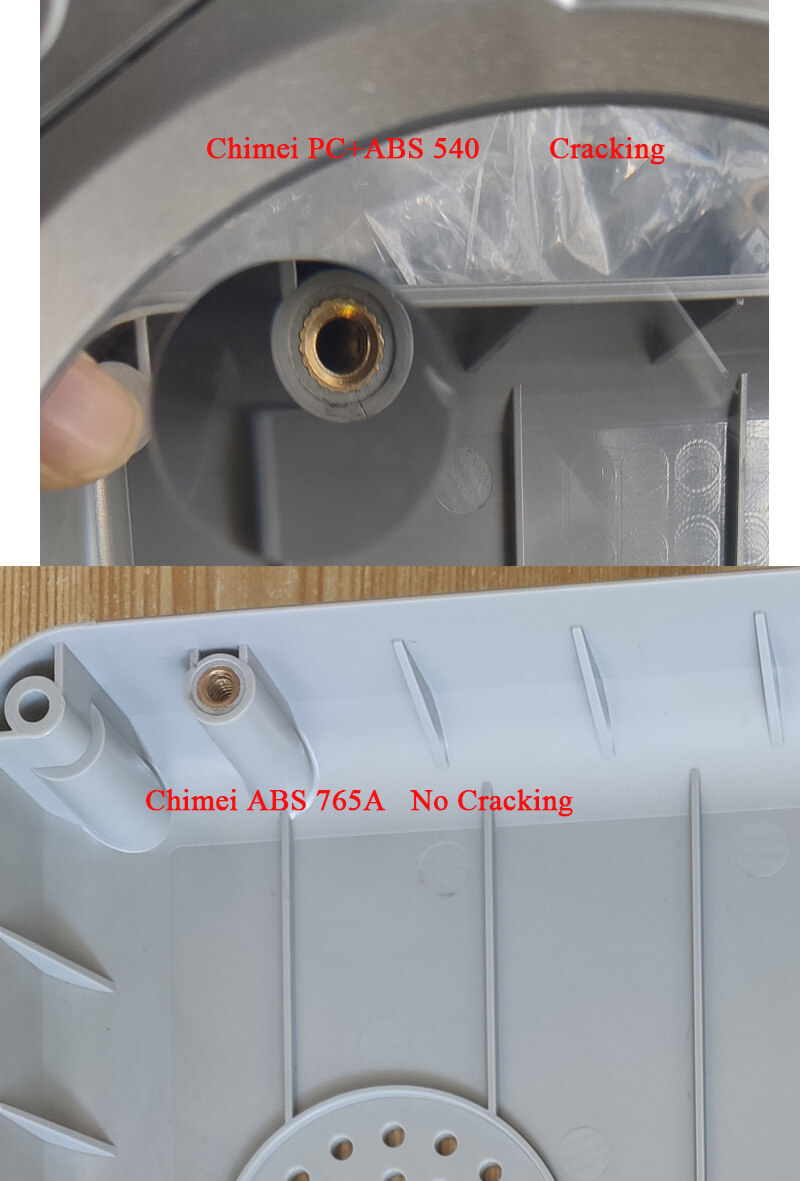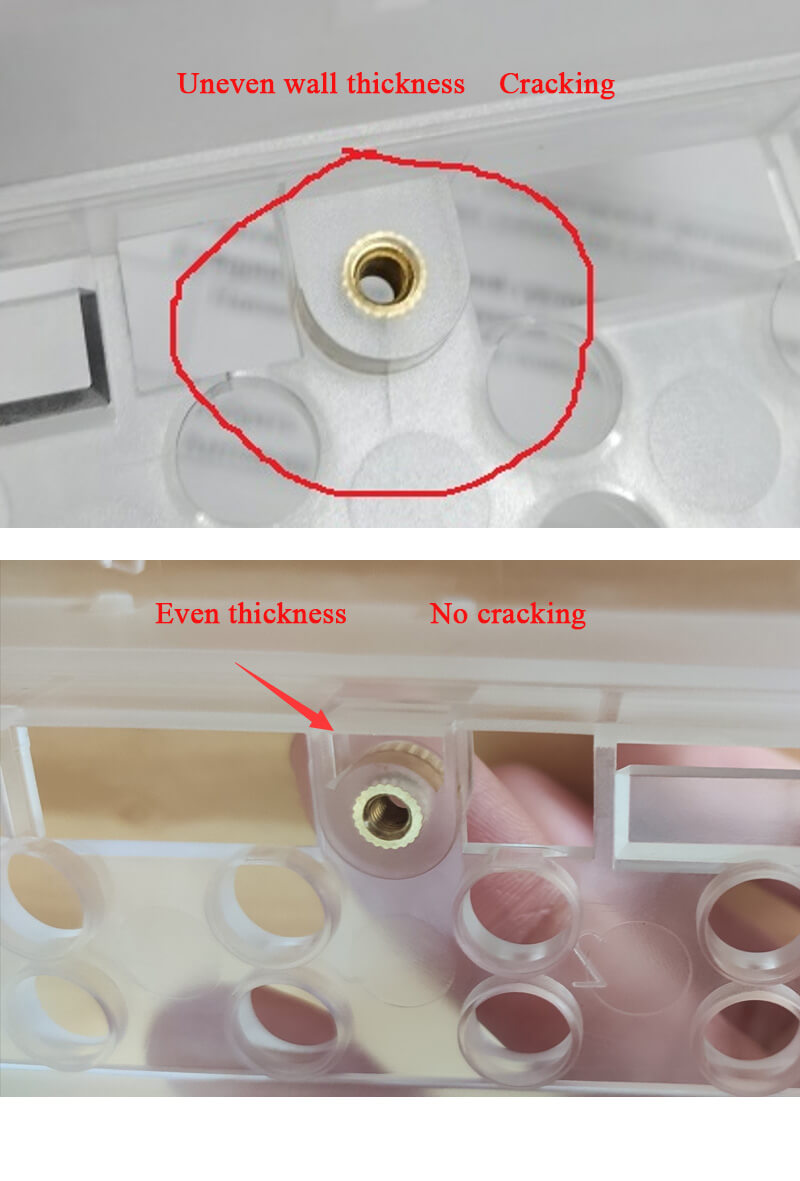
Cracking around metal inserts
Nov21,2022
1, Metal inserts provide close-tolerance resusable metal threads capable of withstanding a continuous load and frequent disassembly.
These threaded inserts have more pull-out force on a mating part than a self-tapping screw in plastics.
2, They can also be used to permanently attach load-bearing parts such as gears to a shaft.
3, Finally, the metal insert functions as an electrically conductive path through a plastic part.
Inserts are metal parts placed into the mold prior to mold close. During the injection cycle, molten plastic flows around the insert and locks it in place as the melt solidifies. Unfortunately, plastic shrinks as it cools and metal inserts, with their high modulus of elasticity, restrain that shrinkage around the insert. This sets up a residual stress in the plastic. If the stress exceeds material limitations, cracking occurs. An important factor in preventing cracks around an insert is the design of the insert itself. Various grooves and knurling patterns are normally used to boost the pull-out or torque resistance, but these should not have sharp corners, or they will act as stress risers in the plastic part. For a molded-in insert, however, material shrinkage is the primary cause of cracking.
As you may know, inserts are metal parts placed into the mold prior to mold close. During the injection cycle, molten plastic flows around the insert and locks it in place as the melt solidifies. Unfortunately, plastic shrinks as it cools and metal inserts, with their high modulus of elasticity, restrain that shrinkage around the insert. This sets up a residual stress in the plastic. If the stress exceeds material limitations, cracking occurs.
1, Substitute a material with similar shrinkage but higher long-term stress resistance, such as PC, which can sustain 2000 psi.
For example, the same mold, same wall thickness around the bosses, and same inserts, for the below part, we have tried PC Makronlon 6555, Chimei PC+ABS 540, Chimei PC/ABS 540A, Chimei ABS 765A, and only Chimei ABS 765A does not crack.

2, Reduce effective interference by preheating the insert before molding.
3, Use a different inserting process, such as ultrasonic or heat inserting, which melts only a thin layer of plastic for greatly reduced residual stresses.
4, Designers should pay more attention to the wall thickness of the boss. If the wall thickness of the boss is more than 75 percent of part thickness, then sink marks on the part surface are possible. Designers may then consider changing to a smaller diameter insert or different inserting process. If the minimum required wall thickness of the boss is less than 75 percent of the part thickness, the insert will not crack due to residual stresses and sink marks will not be a problem. So, continuous even wall thickness is very important to avoid cracking.
For example, same mold, same inserts, same material, Chimei PC 110, at the beginning, the wall thickness was uneven, it cracks. After reduce the wall thickness to be even, cracking problem solved.

<< Previous page
Next page >>